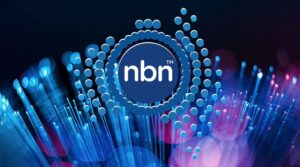
Protected: Unveiling AI Voice Bot for Enhanced Business Automation
There is no excerpt because this is a protected post.

When you move to MBIT you can bring your existing numbers with you, this process is called Porting.
We recommend that you get in contact with us so we can best advise you on this process and get it right the first time for you.
Porting can take time and mistakes in the Port Authority Form can make the process much slower.
Below is an FAQ that can help you get a head start on what porting is and what it involves.
Porting allows you to change your connection from one carrier to another and keep your existing telephone numbers.
Most likely yes, numbers can be ported from PSTN, ISDN, and other VoIP services. There are two different types of port classifications through ‘Simple’ (Cat A) and ‘Complex’ (Cat C).
It is always best to speak with MBIT first before lodging your port, we can help you determine what you need and how long it will take.
Determining the port type can be tricky – if you have doubts of the category of your number/s, it is often best to send MBIT the latest bill with the relevant number on it.
A Cat A port is for when the number has no associated service or is in use as a VOIP number.
Cat C porting is needed when there is a complex service associated with the number. Complex service can include, but are not limited to:
This is a challenging question, if the port is ‘Simple’ it will generally take 1-2 weeks to complete if it is ‘Complex’ it can take upwards of 6 weeks. Porting progression is based on business days, so weekends and public holidays can impact delivery. You will not be down during this time it is simply the time it takes for approval.
If it is the case that a complex service is associated with your number, it can save time to disassociate the service from that number. Often the service can be migrated to a different number, though generally this can take multiple days to do and is something to discuss with your current carrier.
The steps involved vary between ‘Simple’ and ‘Complex’ ports.
Simple ports simply require acceptance from the losing carrier, then a cut-over date is negotiated. Typically this is a 5 business day turn-over. If there are any complex services associated the port is rejected and we are advised that the number has an associated complex service. This can mean services like ADSL, or that there are additional numbers tied to that number (often this is due to a Line Hunt group).
Complex ports (as the name suggests) are more complicated. This is submitted via the Port Authority Form. The losing carrier receives this form and sends an acknowledgment response in the form of an “acceptance”, this is the Pre-Number Validation (PNV) stage. The losing carrier reviews the number and validates its eligibility for porting. It is during this stage that the port request will be accepted, or rejected. If it is rejected a reason is provided and if the port is to progress, the losing carrier requires a response. After the port request is accepted, a cut-over date is negotiated – this generally requires 10 business days to progress to finalisation and the number is cut-over.
MBIT will contact you with a date that the port will cut over, on this date you will lose service for a period of time while the number cuts over, this is usually 20 minutes but can be longer depending on the port.
Once done MBIT will contact you on your ported number to make sure everything is working for you.
As thanks for bringing your service over to MBIT, we cover the cost of porting for you.
Yes, you can download the Port Authority Form here.
The MBIT Port Authority Form is a .pdf document with writeable forms that requires a compatible reader. The .pdf is confirmed compatible (as of Oct ’19) with Chrome, Internet Explorer, Adobe Reader, and Foxit Reader. It is not currently compatible with Mozilla Firefox’s in-built .pdf reader.
Should you have any issues with this form, you can either print and sign by hand or use MBIT’s Microsoft Excel/.xls Legacy Port Authority Form which is found here.
Direct Links:
MBIT_Port_Authority_Form.pdf
MBIT_Port_Authority_Form_Spreadsheet.xls

There is no excerpt because this is a protected post.

Gaining a comprehensive understanding of the distinctions between NBN, Business Fibre, and regular Fibre is pivotal in making informed decisions regarding your business’s internet solution.